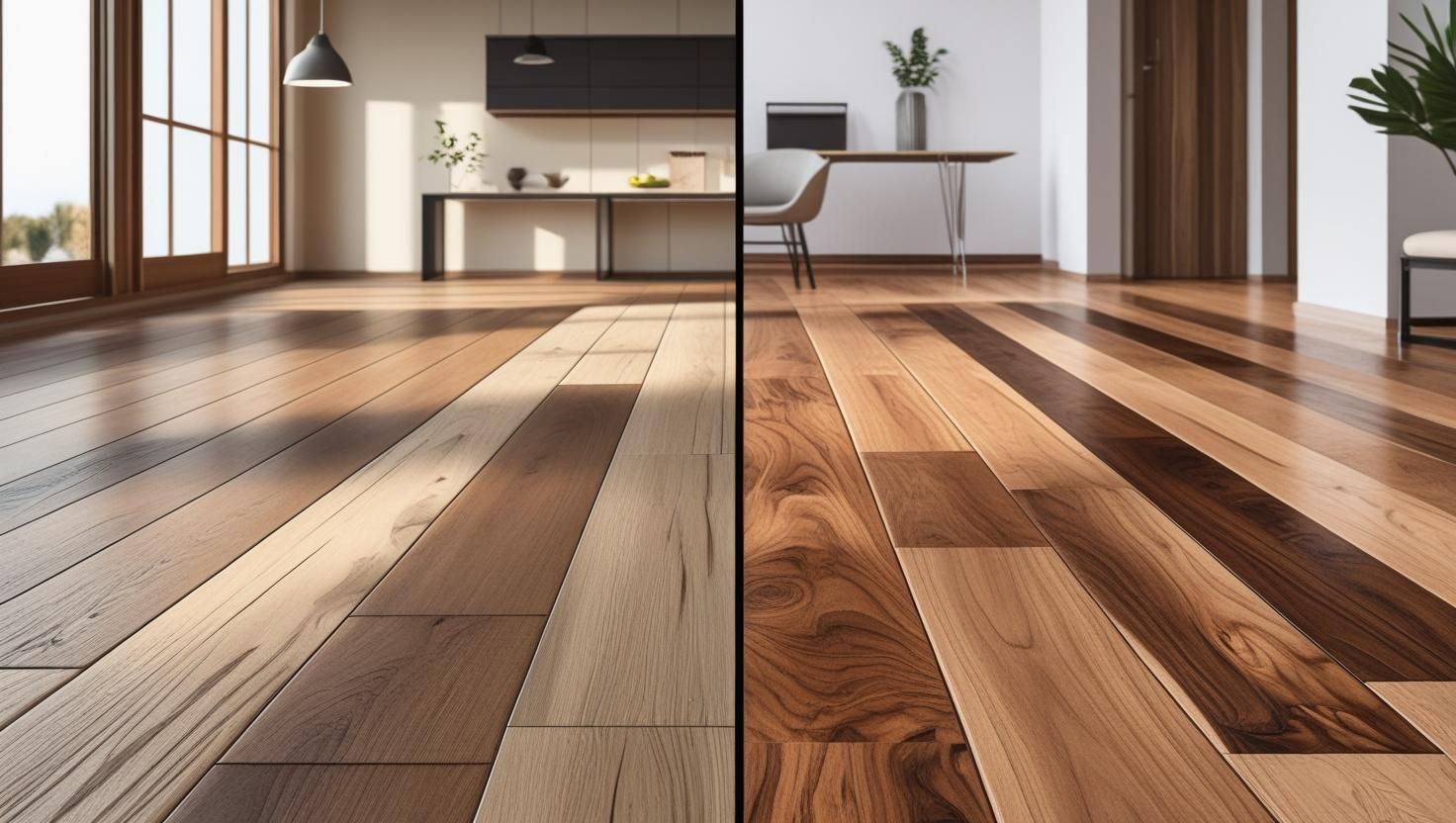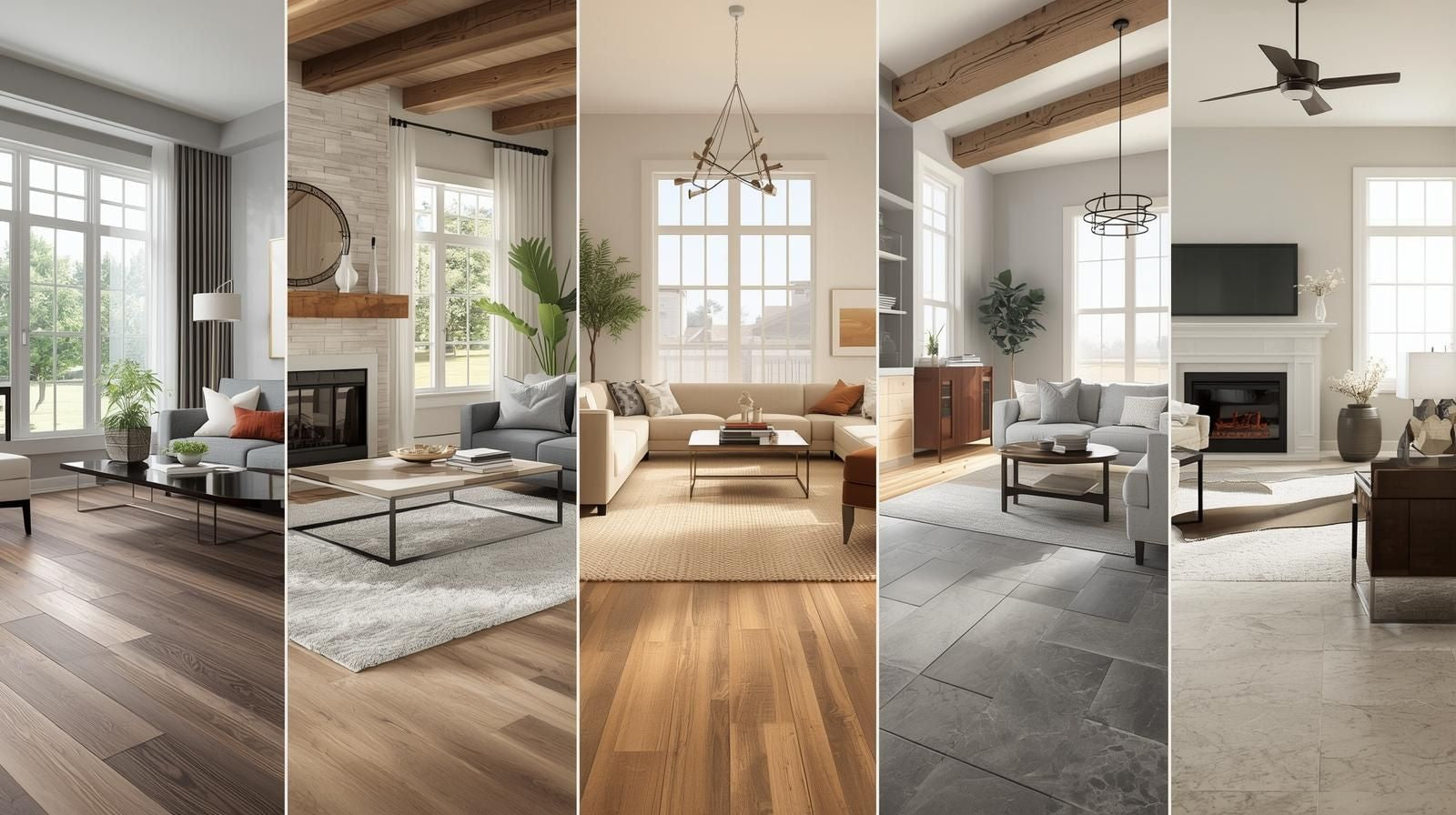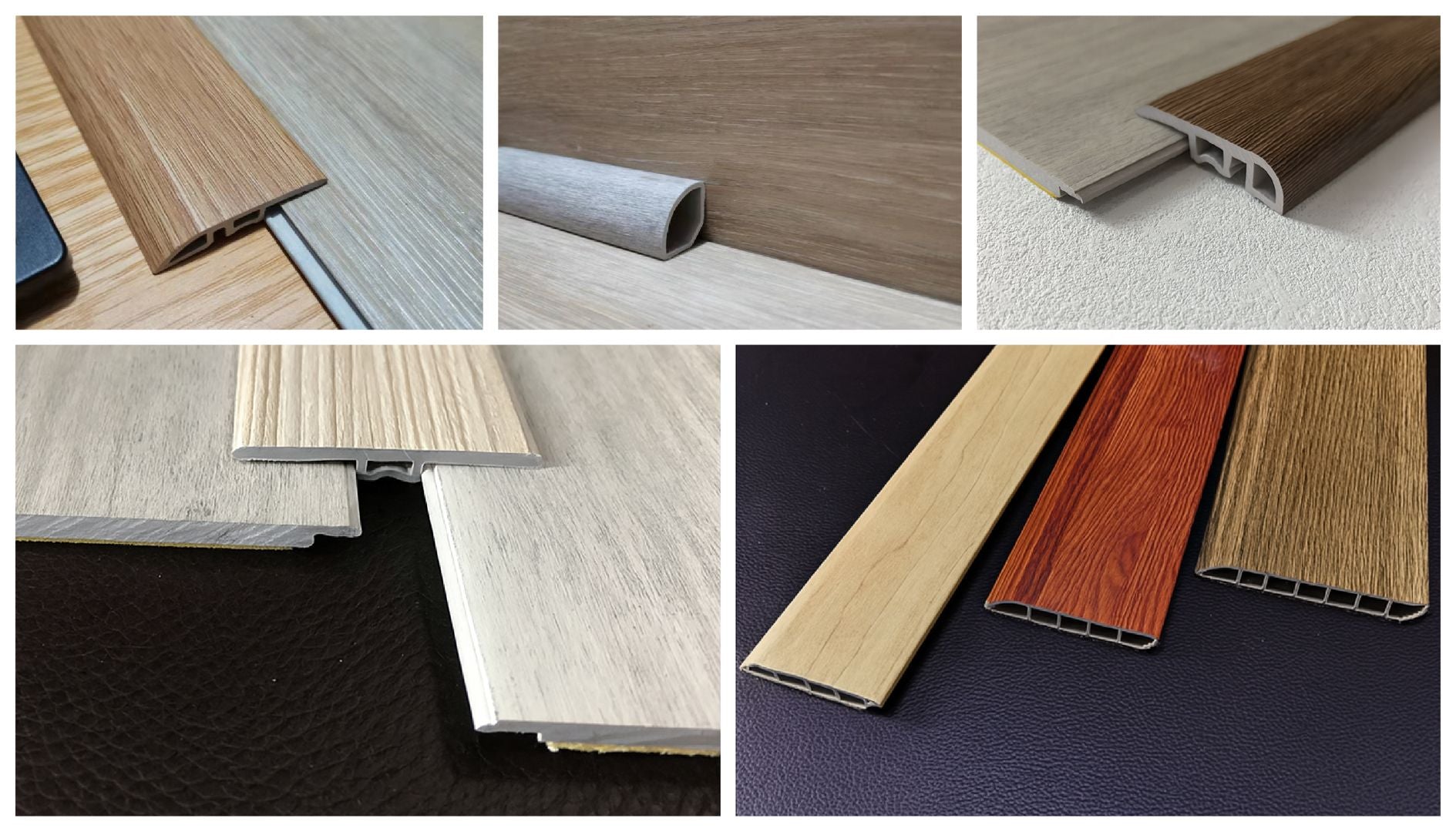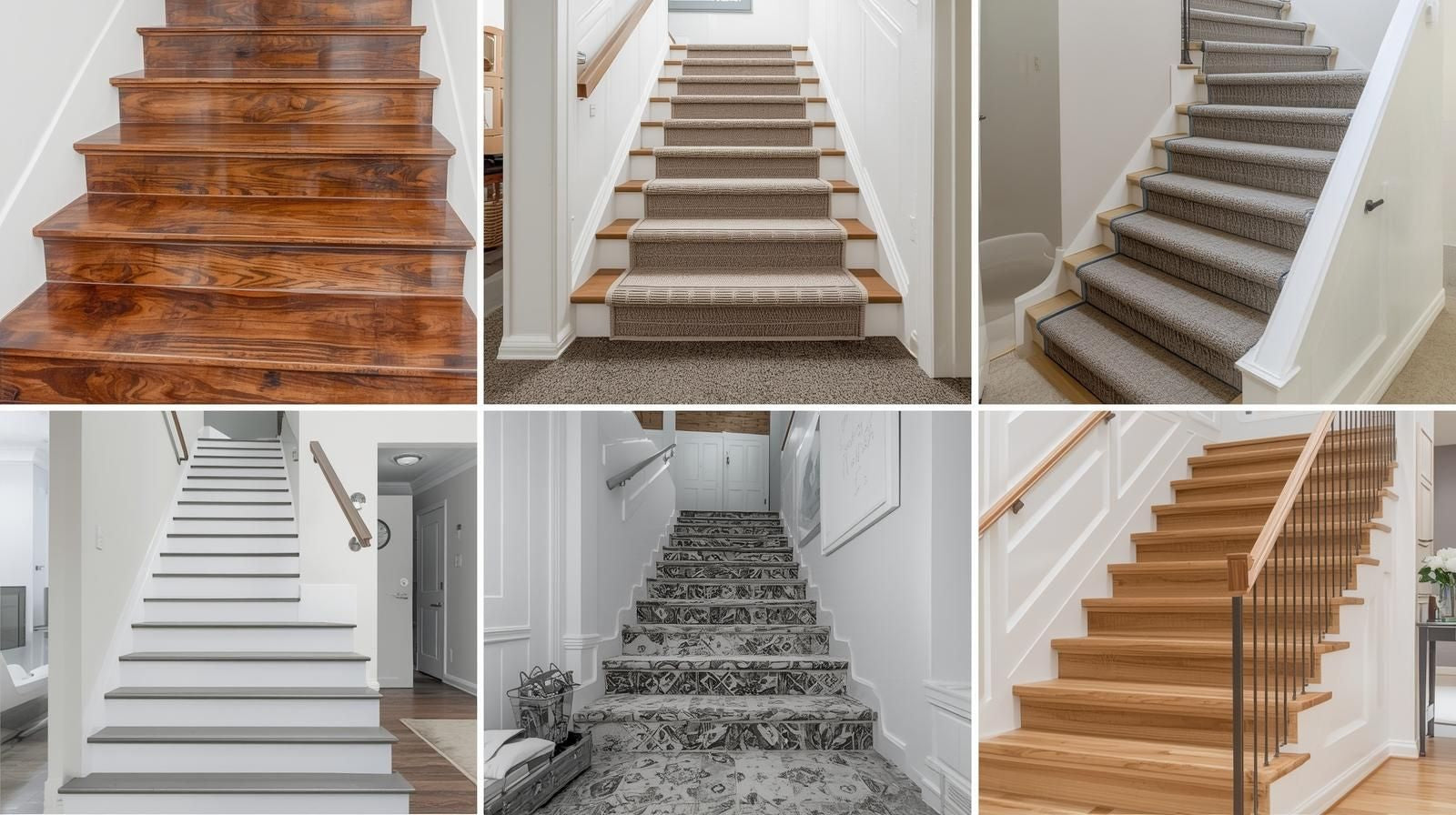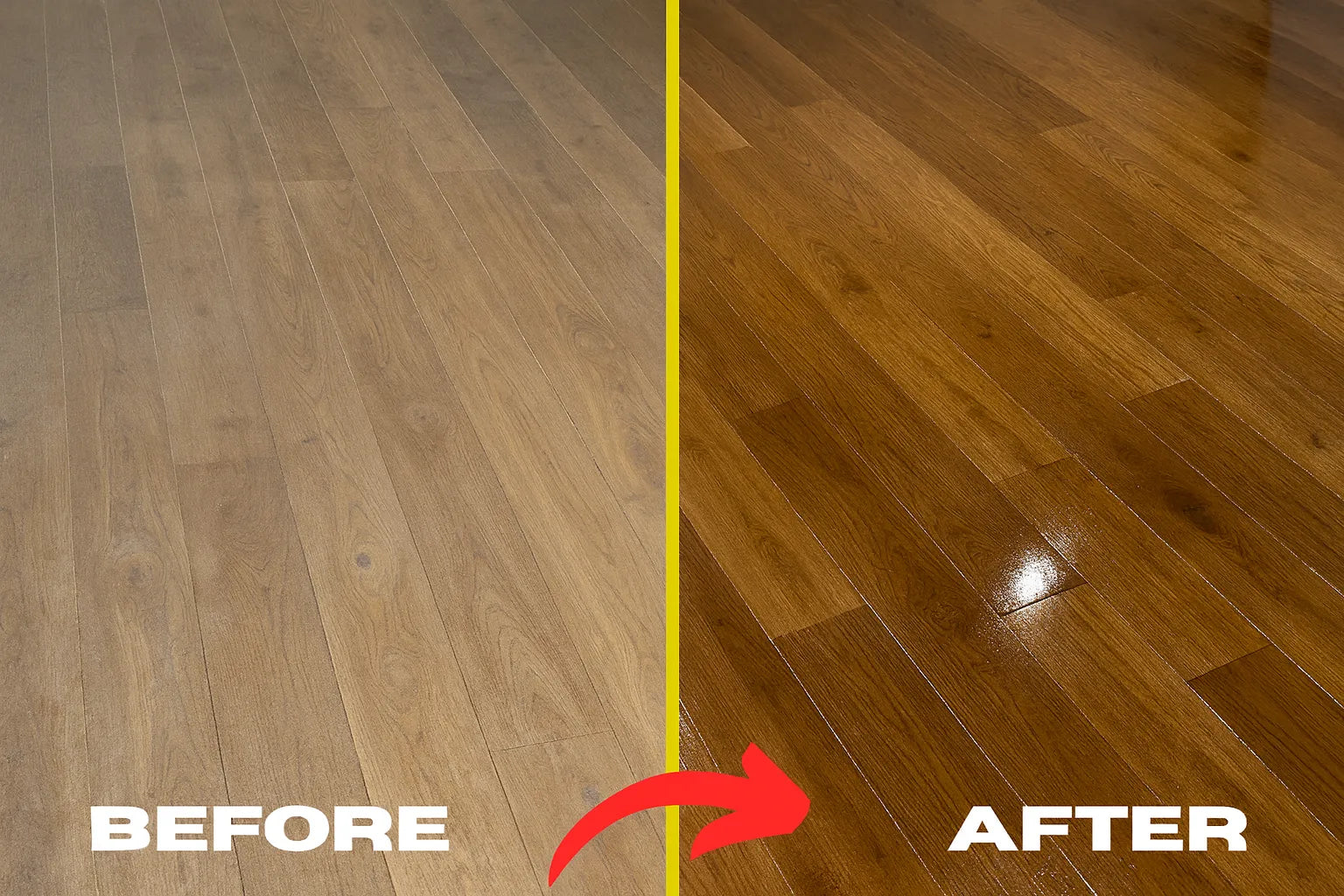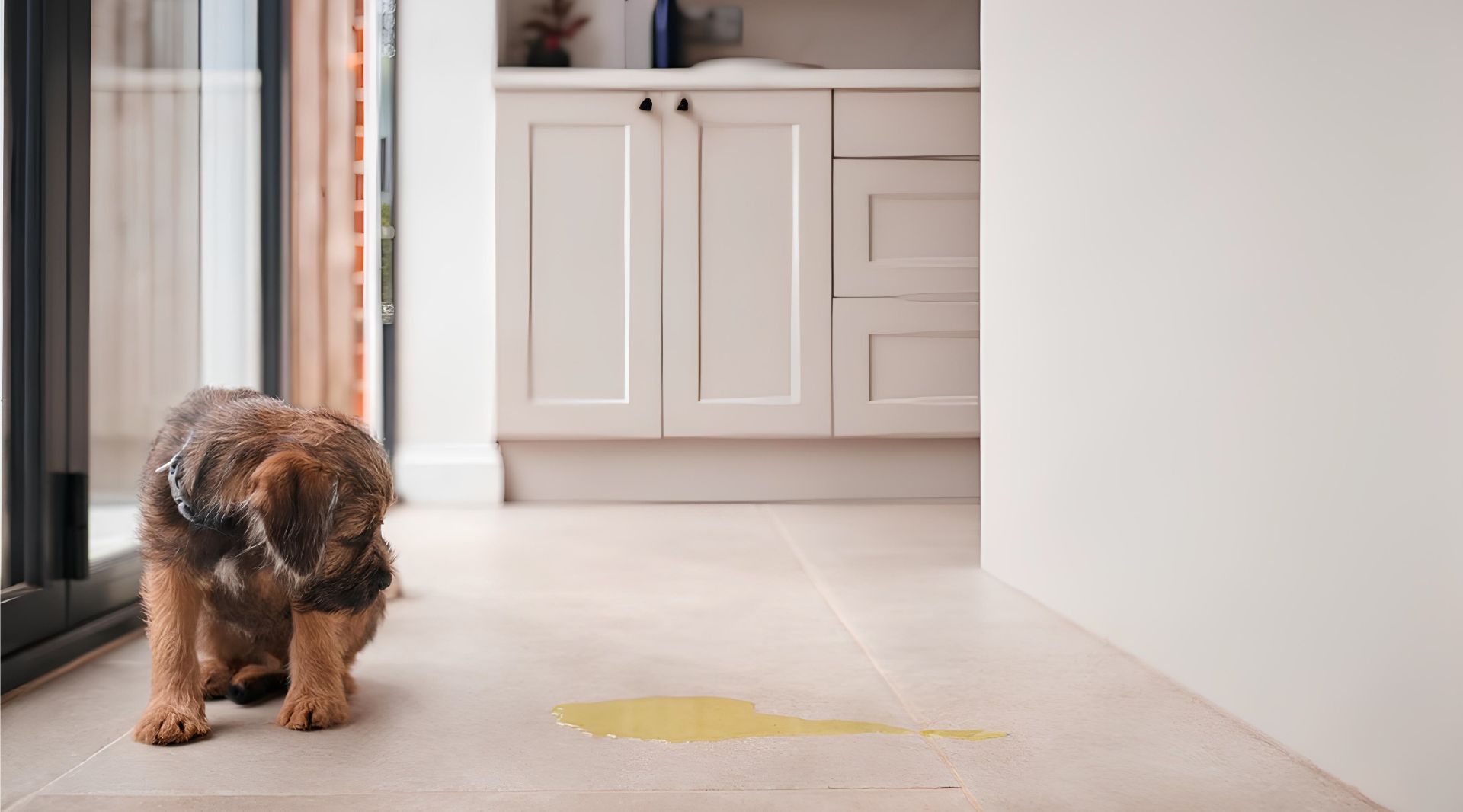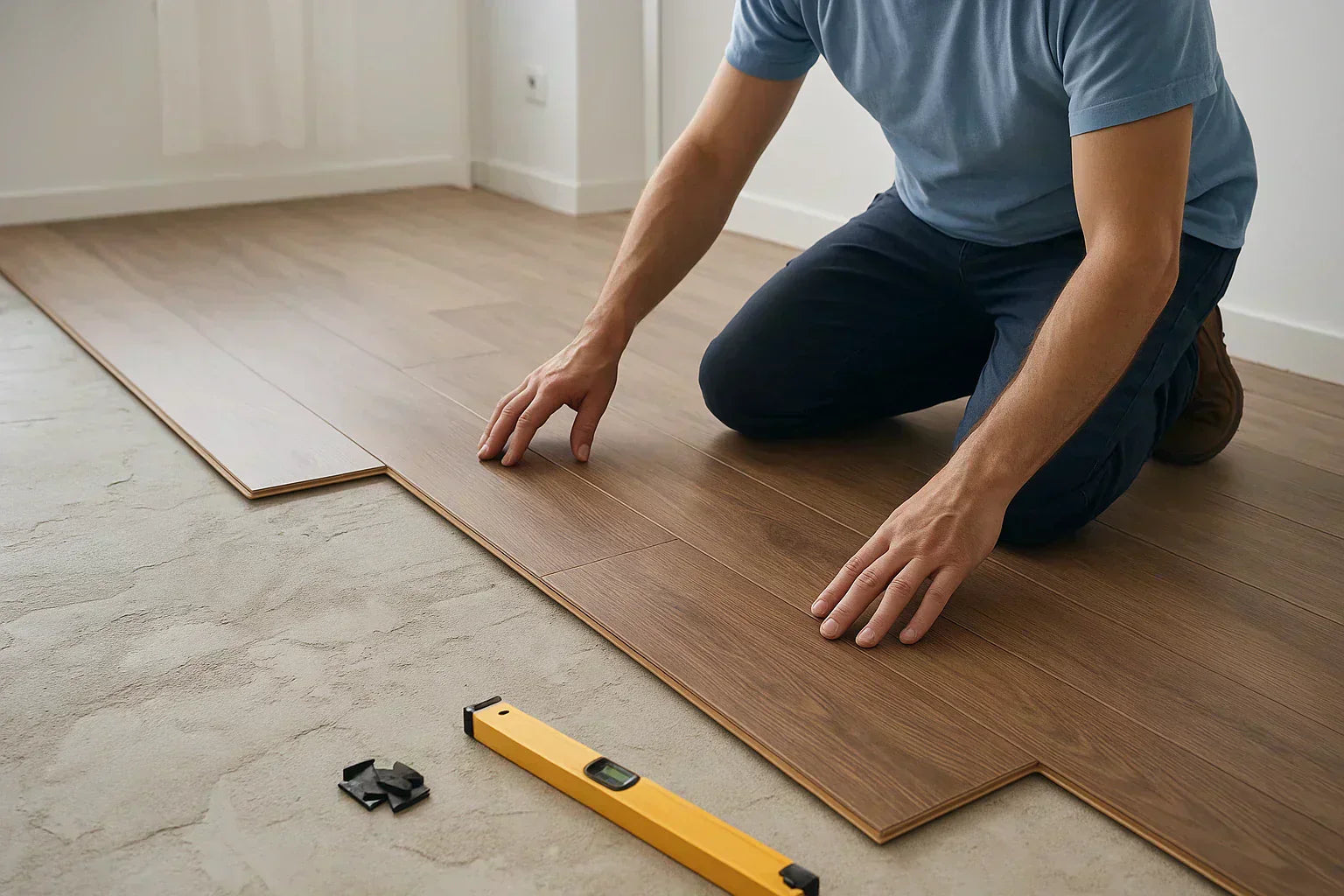Is real wood still worth it, or has engineered flooring changed the game?
At first, both options offer the warm, iconic look of natural wood, but beneath the surface, they are built very differently.
Milled solid hardwood is engineered out of a solid piece of timber, providing a thick sandable wear layer, which may last several generations, but is also more vulnerable to moisture and temperature variations. Engineered wood, by contrast, is a composite that consists of a genuine veneer of a hardwood with a number of plywood or high-density fiberboard (HDF) layers, by which point it is a more dimensionally stable product, performing better in different climates and installation conditions.
So, the decision between the two is something that impacts long-term performance, cost, maintenance, and even resale value.
In this article, we’ll break down the key differences between solid and engineered wood flooring, beyond just appearance. We’ll look at construction, cost, lifespan, refinishing potential, moisture resistance, and where each type excels (or falls short). Have a look!
A Quick Snapshot Comparison - Engineered Wood vs Solid Wood
|
Aspect |
Solid Wood Flooring |
Engineered Wood Flooring |
|
Core Structure |
100% hardwood |
Multi-layered: hardwood veneer + plywood/HDF core |
| Plank Thickness | Usually ¾ inch (19 mm) | ⅜ to ⅝ inch (9.5 mm to 15 mm) |
| Best For | Long-term homes, dry areas |
Basements, humid areas, and apartments |
| Durability | Can last 30–100 years | 20–40 years, depending on quality |
| Refinishing | Multiple times | Limited (1–2 times max) |
| VOCs (Volatile Organic Compounds) | Low (if unfinished or natural finish) | Can be higher due to adhesives/resins used in layers |
| Acoustic Performance | Denser – better at reducing footfall noise | May require underlayment for sound insulation |
| Shrinkage/Gapping Risk | Higher in dry climates or winter | Minimal due to cross-layer construction |
| Surface Texture Options | Smooth, hand-scraped, distressed |
Wide variety, including wire-brushed, UV-cured finishes |
| Cost | Higher upfront cost | Budget-friendly options available |
Appearance & Construction: What You See vs What’s Inside

You might not spot it right away, but solid wood and engineered wood floors can look nearly the same once they’re finished. They carry the same warmth and natural detail, from oak’s soft lines to the dark curves in walnut.
What changes everything is how they are built. Underneath that top layer of wood is where they separate. And that unseen part? It’s what shapes how the floor reacts to wear, weather, and time.
Solid Hardwood Flooring: One Solid Slab of Timber
Let’s start with solid wood flooring. This type is milled from a single piece of hardwood, usually around ¾ inch thick. There are no added layers, no adhesives, and no composite materials. It’s just pure wood, through and through.
Solid wood is very dense; that is one of its greatest qualities. You can feel that weight and richness under your feet when you walk on it. And the best part? It is possible to sand it down and re-refinish it numerous times over the course of its life.
The way wood is cut changes both its style and strength. There are three major cuts people use:
- Plain-sawn gives more character to the grain. It’s popular because it’s less costly and has that classic wood look.
-
Quarter-sawn wood has a closer, more even pattern. This cut also helps the board handle moisture shifts better.
- Rift-sawn is the cleanest in appearance. Its straight, narrow grain gives off a crisp, modern feel that designers often go for.
With solid hardwood, you get both the body and the surface from one solid piece of wood. That natural bond adds to its strength and beauty.
Engineered Wood Flooring: Smart Layers with Real Wood on Top
Now, engineered hardwood flooring is where things get a bit more technical.
Unlike solid wood, engineered wood is constructed in layers. At the surface, there’s a thin sheet of real wood. It might be hickory, maple, or oak; it depends on the style. This top layer usually measures anywhere from 0.6mm up to 6mm. The thicker it is, the more chances you get to refinish it.
Beneath that layer, the base is made using plywood or HDF. The grains run across each other in different directions, which makes the board more stable.
Because of this smart build, engineered wood doesn’t react badly in places where traditional wood might twist or swell. Think of rooms with high moisture or temperature shifts, basements, over concrete, or above radiant heat setups. Another plus? The boards come in bigger, wider pieces than solid hardwood, thanks to the strong inner core.
You’ll often see 7–9-inch wide boards, and even lengths over 7 feet. That gives you a cleaner, more modern look with fewer seams.
If you want a completely natural product, go with solid wood. If you want similar beauty with more flexibility, engineered wood is a smart pick.
Style and Species: What Look Are You Going For?

Both engineered and solid wood floors have gorgeous styles, warm shades, and a range of wood types. But where they really separate is in how far they let you go with your design, and how much it might stretch your wallet.
Solid Wood: Classic Beauty, Natural Variations
There’s something honest about solid hardwood. It’s cut from a single tree type, giving it a raw, natural character that machines can’t copy. Grain patterns shift gently from plank to plank, so even when your floors match, they don’t repeat.
Popular species include:
- Red and White Oak
- Cherry
- Maple
- Walnut
- Hickory
You can go for matte, satin, or glossy finishes, whatever suits your space best. Plank widths aren’t limited either. Planks come in all kinds of widths, from regular to wide, giving you design freedom. For texture, you can go smooth and clean or choose the rich detail of hand-scraped or even a rugged, distressed look.
Engineered Wood: Modern Versatility, Expanded Choices
Engineered wood works well in modern spaces and brings in more choices. It has a top layer of real wood, but underneath, its strong, layered core supports extra-long and wide planks. This setup also allows textures that are harder to get with solid wood.
Numerous engineered floors from top brands can be used directly out of the box. They are pre-done, and hence you do not have to deal with the mess and still have a clean, even look immediately. And with a factory-stained and treated appearance, it comes in exotic styles such as:
- Acacia
- Brazilian Cherry
- Tigerwood
- Teak
You also get access to reactive stains, wire-brushed textures, and UV-cured finishes that boost durability and style, all without breaking the bank.
Engineered wood offers more flexibility with exotic woods and finishes that may not be available or cost-effective in solid wood.
Installation Process & Location For Best Fit

Solid hardwood flooring usually gets nailed or stapled down straight into a wooden subfloor. It doesn’t work on every surface. You can’t install it over concrete, tile, or anything similar. The subfloor needs to be wood-based, clean, dry, and flat. Plywood or oriented strand board (OSB) is most commonly used.
The hardwood must settle in the room before any starts. It involves allowing it to rest a few days so that it can adapt to the air and humidity. Because it is a single piece of wood, it responds swiftly to shifts in moisture and temperature; it gains, loses, and even curves.
Trying to install it directly over concrete, especially in basements or over radiant heat, causes big problems. Warping, cupping, or cracking are likely outcomes. That’s why these setups are often ruled out.
Best Rooms For Solid Hardwood
- Living rooms
- Bedrooms
- Hallways
- Dining areas in dry climates
- Second-floor installs over wood subfloors
Heads-up: Solid wood is not recommended for bathrooms, laundry rooms, or basements. Basically, anywhere that sees higher humidity or moisture risk.
Engineered Wood Installation: More Flexible, Less Hassle
Engineered hardwood is designed to adapt to more conditions, and the installation options are definitely easier and more versatile.
- Depending on the product, engineered planks can be installed using:
- Glue-down method (great for concrete slabs)
- Floating floor installation with click-lock edges
- Nail-down or staple-down like solid wood (if you prefer)
Easy and simple make the floating floor system a go-to for many. You won’t need glue or special tools. Just click the boards into place. It fits right over existing flooring, tile, vinyl, concrete, and even radiant heat setups.
As for engineered wood, it reacts gently to changes in temperature and humidity. Unlike solid wood, it won’t move much. That reduces the risk of warping or cracks forming when the seasons shift.
Best Locations For Engineered Wood
- Basements flooring
- Condos or apartments with concrete subfloors
- Homes with radiant floor heating
- Kitchen floors(if spills are managed quickly)
- Entryways with temperature fluctuation
Homes with uneven floors or narrow corners often need more flexible materials. Engineered wood fits the job well. Its thinner size helps it slide into tighter spots with less fuss than solid wood.
Durability & Lifespan: How Long Will Your Floors Really Last?
When you’re putting money into new floors, it’s not just about today’s look. You want something that won’t give up on you next year. Kids running, pets chasing balls, chairs scraping across it, life is rough on the floors. And that’s why durability and how long they last are a huge part of the decision.
Solid Wood Flooring: Naturally Strong, Built for the Long Haul
The aspect of durability really shows its value in solid hardwood. With proper care, it could last decades, and in some cases up to 100 years of beauty and strength. There is nothing surprising about this. The boards are single cuts of authentic wood of thick dimensions. Such a thickness will permit several degrees of sanding as well as refinishing.
It is even common to find that the lifetime of these floors requires 5 to 7 refinishing. Such flexibility is just what you would want when you are working with scratches, dents, or dullness that accumulates with time.
On the other side, however, there is a flip side. As planks are made of 100 percent wood, they respond to moisture in the house. The absence of consistent temperatures and moisture may cause shifting, gapping, or even slight warping. When unaddressed, it would undermine the structure long-term.
Engineered Wood: Durable, But With Limitations
Dimensional stability is one of engineered hardwood’s biggest strengths. That’s because of its inner structure, layers of plywood or HDF pressed together. It’s not as thick as solid wood, but it handles moisture and temperature swings more reliably.
But the real game-changer? The top layer, that hardwood surface, matters most. Its thickness decides how long the floor will last.
- A thin layer (1.5mm or less) can’t be sanded. Once scratched, the whole board needs replacing.
- A medium layer (2–3mm) holds up to a gentle sanding, maybe one time.
- A thick layer (4–6mm) is much stronger. It can be refinished once or twice, pretty close to what you get with solid hardwood.
Most engineered floors do well under regular use. When finished with UV-cured aluminum oxide, they hold up against scuffs, spills, and fading. Just know the wood species on top matters. Softer ones like walnut get worn down faster than hard species like oak, even if the core underneath is solid.
Moisture Resistance, Climate Suitability, & Sound

Wood floors need to be good enough to handle moisture, changing weather, and everyday noise.
1. Moisture Resistance: Who Handles It Better?
Moisture can cause serious problems for solid hardwood. Being a single piece of lumber, it reacts to humidity changes, swelling when it’s damp and shrinking when it’s dry. Over time, this can lead to cupping, gaps, or even warped boards. That’s why it’s not recommended in bathrooms, basements, or areas with concrete foundations.
Tip: Always acclimate solid wood to your home’s climate before installation.
On the other hand, engineered wood is built differently. Its layered structure keeps it stable when humidity rises or falls. It won’t swell or shrink as easily, so it handles damp environments better. Kitchens, concrete bases, and humid zones are where it really works. Some types even come with water-resistant bottom layers for added defense.
2. Climate Suitability: Where Does Each Floor Type Work Best?
Solid wood thrives in stable, dry conditions. If your indoor humidity and temperature fluctuate, you’ll likely see movement in the boards.
Engineered wood handles temperature shifts and seasonal humidity much better. It's perfect for coastal homes, dry regions, or radiant heating systems.
Choose a plywood-core engineered plank for even better performance in extreme conditions.
3. Sound Transmission: Which Feels (and Sounds) Quieter?
Solid hardwood has a dense, echo-prone feel. You’ll hear footsteps, furniture movement, and impact sounds more unless you add acoustic underlayment or rugs.
Engineered wood can be installed with built-in underlayments or sound-dampening pads, especially in floating floor setups. It’s a better option for apartments, condos, or multi-level homes.
Cost Comparison & Resale Value: What Are You Paying For?
Everyone who is investing thinks about the real cost of solid vs. engineered wood floors. And more importantly, will it pay off in resale value?
| Category | Solid Hardwood | Engineered Hardwood |
| Material Cost | $8 – $15 | $4 – $10 |
| Total Installed Cost | $12 – $23 | $6 – $15 |
| Sanding & Refinishing (later) | $3 – $5 (per refinishing) | $0 – $3 (only if thick wear layer) |
Flooring can seriously influence buyer perception and home value; it’s one of the first things people notice when walking in the door.
House sellers and their buyers always rank solid hardwood floors as one of the best features. They usually add value to the houses and fetch greater offers as they are classic, genuine, and durable. Solid wood is viewed by many purchasers as an additional luxury.
Engineered wood also has strong resale value, as long as it’s high-quality and installed well. Buyers generally respond well to wide planks, stylish finishes, and modern textures. Just be sure to disclose the refinishing limitations if asked.
Although it does not have the same luxury connotation as solid wood, it is definitely a significant step up in the quality of laminate, vinyl, or carpet and certainly an addition to value in markets with new or remodeled housing.
Care And Maintenance Requirements
Hardwood flooring allows you the flexibility of refinishing it over the years. The solid structure allows it to be fully sanded and stained with a new look every 7 to 10 years. Dents and scratches can be polished. It is one of the greatest benefits of the thicker board.
But it is easy to clean engineered hardwood floor; maintenance depends on what’s on top. A thin wear layer may not handle sanding at all. That’s why it’s important to guard the surface. A gentle vacuum helps. Microfiber mops are ideal, just slightly damp, never wet. Avoid too much moisture.
Daily habits make a difference. Clean up spills right away. Add floor protectors under chairs and sofas. Use mats near the front door. If your home is busy, look into engineered floors with strong, scratch-resistant layers. They hold up well to daily life.
Proper care = longer lifespan and better appearance, no matter the floor type.
Which is Better: Engineered Hardwood Flooring or Solid Wood Flooring?
Honestly, the question isn’t which floor type is “better”; it’s about which one suits your space, lifestyle, and long-term plans.
Working with a tight budget and looking to refresh your space? Engineered wood makes it that much easier without sacrificing beauty and quality.
But for homeowners looking to build something permanent, a place filled with memories, solid hardwood brings that depth and durability you’re looking for.
Need help figuring it all out? Speak with our flooring specialist at (833) 378-4559 now.


